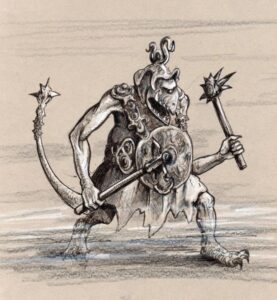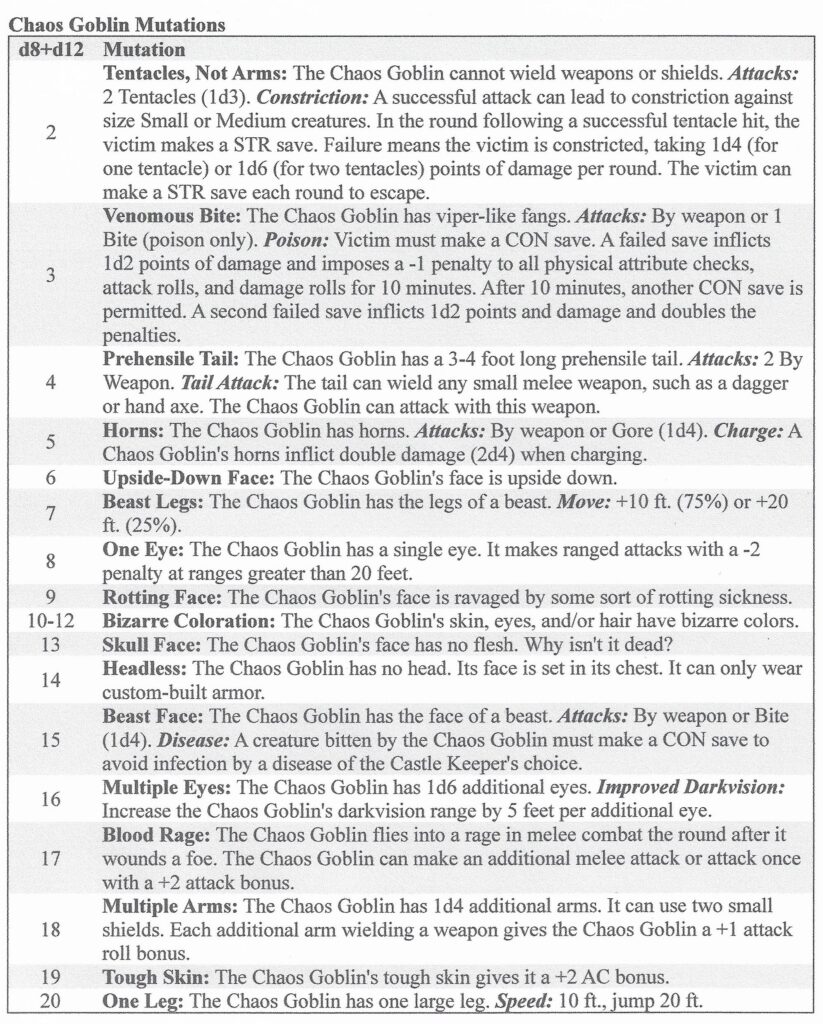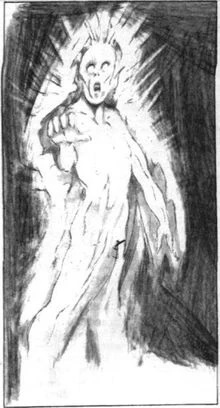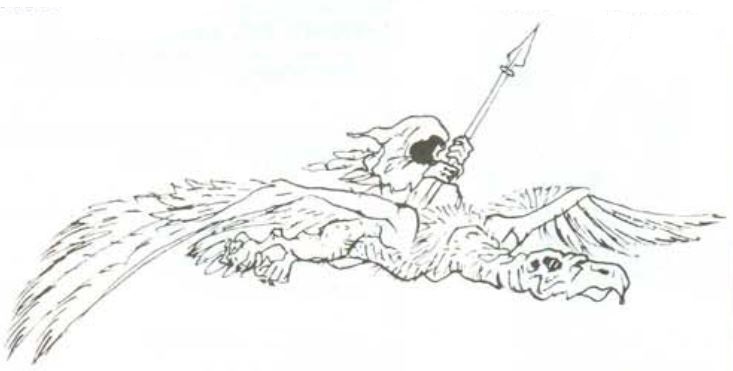Fimir for C&C
Today, I shift away from Chaos Goblins and the Undead and toward the Fimir, found on pages 218-219 of the 1989 Warhammer Fantasy Roleplay (WHF).
WHF tells us that the Fimir might be “part Human and part Demon” and that they “haunt bogs, fens and desolate moorlands throughout the northern and western wastes of the Old World.” While usually fond near coasts, Fimir dwell “anywhere that is suitably dank and dismal”, where they live in “strongholds [that] are typically forbidding, craggy piles of rock, crudely built in the semblance of human castles on jutting headlands and other rocky eminences”. These strongholds are “constantly wreathed thick, writhing mist”.
“The Fimir are creatures of mist and darkness, and shun bright light.” They live in communities populated “almost entirely of males”. These creatures have a caste system. From lowest to highest, these castes are the Shearl (thralls), “a cast of servitors and menials”; the Fimm (warriors), “to which the bulk of Fimir nobility belongs”; the Dirach (demonfriends), “a small but powerful cast of magicians”; and the greatly feared Meargh (hags), “the witch-queens that rule over Fimir strongholds. The Meargh are the only female Fimir.”
Fimir live by raiding isolated communities to seize food and prisoners. Since the Meargh are sterile, Fimir “abduct Human women” with which to breed; offspring of these blasphemous pairings are always fully Fimir whose castes are obvious at birth. Very few female Fimir are born, and most of those are killed by the stronghold’s reigning Meargh.
These raiding parties “generally consist of a dozen or so Fimm and a roughly equal number of Shearl”. Along coastlines, Fimir “travel in low-hulled, black longships.” For important raids, a Dirach leads the Fimir. Meargh are seldom encountered outside their strongholds. Fimir favor “great heavy maces and axes, which a Human would need both hands to wield; some Fimir, especially the nobility, go into battle with one of these weapons in either hand. Fimir do not generally use missile weapons, since the fog which is their natural element precludes missile fire.”
“Fimir dress in an almost Human fashion, but always leave the legs, arms and tail bare. The Fimm often weapon shirts of chainmail in battle, and nobles favor long cloaks fastened at the shoulder by heavy brooches of gold set with gems.” Fimir nobles love blood-colored gems. “Dirach and Meargh wear long, drab-coloured robes and cloaks.”
Fimir resemble large humanoids with powerful chests, short legs, feet with three clawed toes, and long arms that nearly reach the ground. Fimir are quite strong, with strong muscles hidden beneath a flabby layer of fat covered by leathery skin. They have large, mostly bald heads that resemble a cross between a boar and a lizard, with a single lidless eye. Fimir have no exterior ear structures. The average Fimir stands about eight feet tall, but they typically stand hunched over. Fimir also have “powerful, snake-like tails, which average about 6 feet in length.”
Fimir
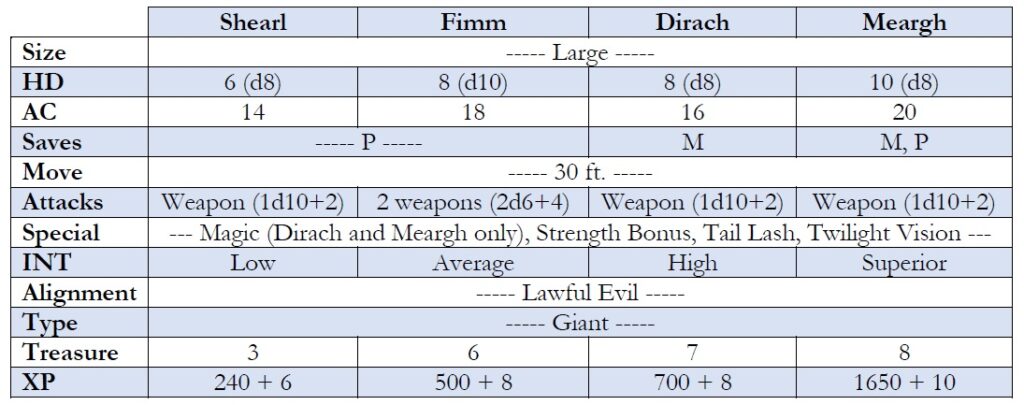
Magic: Dirach cast spells as an 8th-level wizard. Dirach always know summon lesser monster. Due to their pacts with hellish powers, a Dirach can summon a specific type of monster, as desired, and the summoner can communication with its summoned monsters. Meargh cast spells as 10th-level wizards. Furthermore, a Meargh can prepare cleric spells of up to 3rd level in place of wizard spells of the same level. These cleric spells are gained through devotion to evil deities.
Furthermore, once per day, Dirach and Meargh can cast fog cloud. The bilious fog created by this ability is centered on and moves with the caster.
Strength Bonus: Due to their size and strength, Shearl, Dirach, and Meargh receive a +2 bonus to melee weapon damage (including tail lashes). Fimm receive a +4 bonus to melee weapon damage.
Tail Lash: In place a melee weapon attack, a Fimir may lash out with its tail, striking at a creature no farther away than 10 feet. A The tails of Shearl, Dirach, and Meargh inflict 1d6+2 points of damage. Fimm have stronger tails that end in bony knobs or spikes for nobles. These tails inflict 1d10+4 points of damage.
Twilight Vision: No type of fog — natural or magical — obscures a Fimir’s vision. Fimir dislike bright light. They suffer a -2 attack roll penalty in bright light as well as a -2 penalty on saving throws against fear while exposed to bright light.
